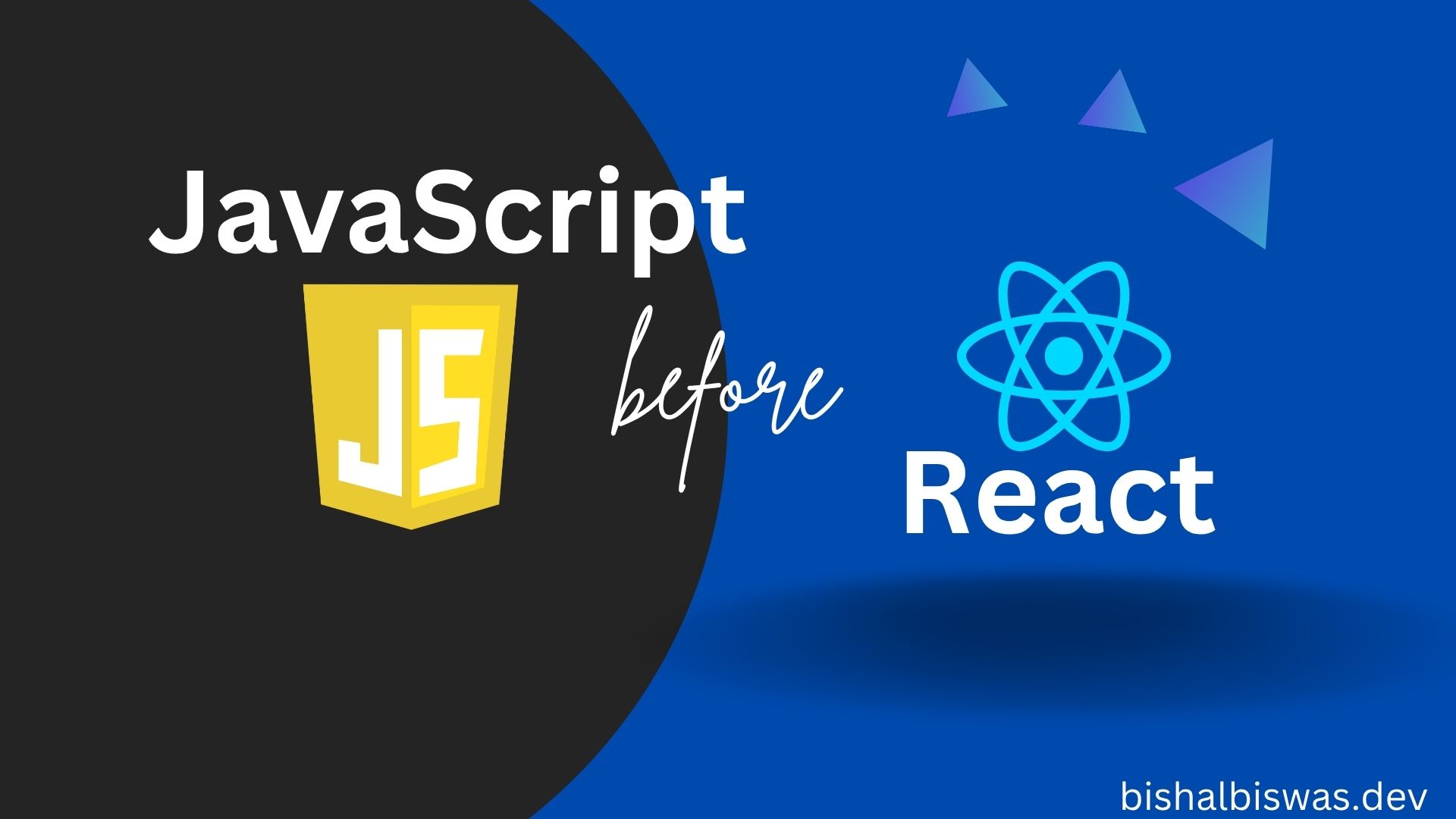We’ll go topic by topic with explanation + examples + small practice task so you can master each concept properly.
Variables and Data Types
Variables
You can declare variables using:
var name = "Bishal"; // old way — avoid using this
let age = 24; // preferred for mutable variables
const country = "India"; // preferred for constants
Difference:
let→ can change valueconst→ cannot change valuevar→ avoid (function-scoped, not block-scoped)
Data Types
- String →
"Hello" - Number →
42 - Boolean →
true/false - Undefined → declared but not assigned
- Null → intentionally empty
- Object →
{ key: value } - Array →
[1, 2, 3] - Symbol / BigInt (rare, advanced)
🧩 Example:
let person = {
name: "Bishal",
age: 24,
skills: ["C#", "React", "Angular"]
};
console.log(person.name); // Bishal
console.log(person.skills[1]); // React
✅ Practice Task:
Create variables for your profile (name, age, skills, country) and log them in a sentence.
Functions
React components are functions — so this is crucial.
Basic Function
function greet(name) {
return `Hello, ${name}!`;
}
console.log(greet("Bishal"));
Arrow Function (modern)
const greet = (name) => `Hello, ${name}!`;
Arrow functions don’t have their own this, which becomes important in React event handlers.
✅ Practice Task:
Write a function sum(a, b) that returns their sum, and then write it again using an arrow function.
Objects and Arrays
Objects
Used for key-value pairs:
const user = {
name: "Bishal",
city: "Kolkata"
};
console.log(user.city);
Arrays
Ordered lists:
const languages = ["C#", "JS", "Python"];
console.log(languages[1]); // JS
Array Methods
You’ll use these a lot in React when rendering lists.
const nums = [1, 2, 3, 4, 5];
const doubled = nums.map(n => n * 2); // [2,4,6,8,10]
const evens = nums.filter(n => n % 2 === 0); // [2,4]
const total = nums.reduce((a, b) => a + b, 0); // 15
✅ Practice Task:
Create an array of objects like:
[{name:"Song1", duration:3}, {name:"Song2", duration:4}]
Then print all song names using .map().
Destructuring & Spread Operator
Destructuring
Extract values easily:
const user = { name: "Bishal", age: 24 };
const { name, age } = user;
console.log(name, age);
For arrays:
const [a, b] = [10, 20];
Spread Operator (...)
Used to copy or merge arrays/objects (you’ll use this constantly in React state updates).
const arr1 = [1, 2];
const arr2 = [...arr1, 3, 4]; // [1,2,3,4];
const user = { name: "Bishal" };
const updatedUser = { ...user, age: 24 }; // merge
✅ Practice Task:
Use spread to clone an array, and modify only one element without changing the original.
Conditionals and Loops
if / else
if (age > 18) {
console.log("Adult");
} else {
console.log("Minor");
}
Ternary Operator (React uses this a lot)
const message = age > 18 ? "Adult" : "Minor";
Loops
for (let i = 0; i < 5; i++) console.log(i);
const nums = [1, 2, 3];
for (let n of nums) console.log(n);
✅ Practice Task:
Use ternary operator to print “Senior Developer” if yearsOfExperience > 3, otherwise “Junior Developer”.
Functions + Objects (This and Arrow)
Understanding this is useful later in React class components or event binding.
const user = {
name: "Bishal",
greet: function() {
console.log("Hi " + this.name);
}
};
user.greet();
If you use an arrow function:
const user = {
name: "Bishal",
greet: () => console.log("Hi " + this.name)
};
user.greet(); // undefined (because arrow doesn’t have its own this)“
✅ Remember: Avoid this when possible — React functional components handle scope differently.
Asynchronous JavaScript
React uses async operations (like fetching APIs) in useEffect.
Promises
fetch("https://jsonplaceholder.typicode.com/posts")
.then(res => res.json())
.then(data => console.log(data))
.catch(err => console.error(err));
Async/Await
A cleaner version:
async function getData() {
try {
const res = await fetch("https://jsonplaceholder.typicode.com/posts");
const data = await res.json();
console.log(data);
} catch (err) {
console.error(err);
}
}
getData();
✅ Practice Task:
Fetch any public API and log 5 results in console.
ES Modules
React uses imports and exports everywhere.
// utils.js
export function greet(name) {
return `Hi, ${name}`;
}
// app.js
import { greet } from './utils.js';
console.log(greet("Bishal"));
✅ Practice Task:
Create two JS files — one with a function, another that imports and uses it.
DOM Manipulation (Just to Understand)
React replaces manual DOM manipulation, but you must know what it does:
const btn = document.querySelector('button');
btn.addEventListener('click', () => {
document.body.style.backgroundColor = "lightblue";
});
Summary — Before React You Should Know
Comfortable with:
let,const, data types- Objects & Arrays
- Functions & Arrow Functions
map,filter,reduce- Destructuring, Spread operator
- Async/Await, Fetch
- Conditional rendering with ternary
- ES Modules (
import,export)



